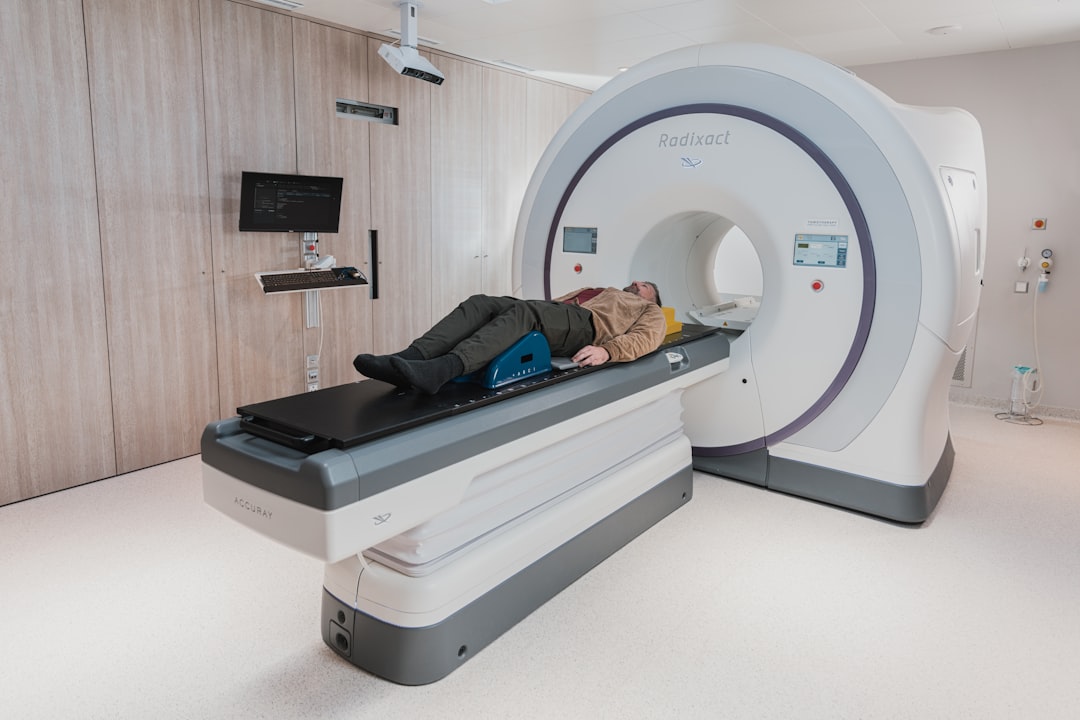In the rapidly evolving landscape of healthcare, the significance of Electronic Patient Records (EPR) cannot be overstated. EPRs serve as a digital version of a patient’s paper chart, providing a comprehensive and real-time view of a patient’s medical history, treatments, and outcomes. This transition from traditional paper records to electronic formats has revolutionized how healthcare providers access and manage patient information.
The ability to store vast amounts of data securely and retrieve it instantly has not only improved efficiency but has also enhanced the quality of care delivered to patients. With EPRs, healthcare professionals can quickly access critical information, such as allergies, medications, and previous diagnoses, which is essential for making informed clinical decisions. Moreover, EPRs facilitate better communication among healthcare providers.
In a world where multidisciplinary teams often collaborate on patient care, having a centralized digital record ensures that all team members are on the same page. This interconnectedness reduces the risk of errors that can arise from miscommunication or incomplete information. Additionally, EPRs support the implementation of standardized protocols and guidelines, which can lead to more consistent and evidence-based care.
As healthcare continues to embrace technology, the importance of EPRs will only grow, paving the way for more integrated and patient-centered approaches to health management.
Key Takeaways
- Electronic patient records are crucial for providing comprehensive and coordinated care to patients, as they allow healthcare providers to access and share patient information easily.
- Clinical decision support systems help healthcare professionals make informed decisions by providing evidence-based guidelines and alerts, ultimately leading to improved patient care and safety.
- Health analytics enable healthcare organizations to analyze and interpret data to identify trends, patterns, and opportunities for improving patient outcomes and operational efficiency.
- Data integration plays a vital role in streamlining healthcare processes by connecting disparate systems and enabling seamless data exchange, ultimately improving care coordination and patient experience.
- Practice management in healthcare offers advantages such as improved billing and coding accuracy, streamlined administrative processes, and enhanced patient engagement and satisfaction.
Enhancing Patient Care with Clinical Decision Support
Clinical Decision Support (CDS) systems are integral to enhancing patient care in modern healthcare settings. These sophisticated tools leverage data from EPRs and other sources to provide healthcare professionals with evidence-based recommendations at the point of care. By analyzing patient data in real-time, CDS systems can alert clinicians to potential issues such as drug interactions, allergies, or deviations from clinical guidelines.
This proactive approach not only aids in preventing adverse events but also empowers healthcare providers to make more informed decisions tAIlored to individual patient needs. The implementation of CDS systems has been shown to improve patient outcomes significantly. For instance, by providing reminders for preventive care measures or suggesting appropriate diagnostic tests based on patient history, these systems help ensure that patients receive timely and appropriate interventions.
Furthermore, CDS tools can enhance the educational aspect of patient care by offering clinicians insights into best practices and emerging research findings. As healthcare becomes increasingly complex, the role of CDS in supporting clinical decision-making will be paramount in delivering high-quality care and improving overall health outcomes.
Leveraging Health Analytics for Improved Outcomes

Health analytics is transforming the way healthcare organizations approach patient care and operational efficiency. By harnessing the power of data analytics, providers can gain valuable insights into patient populations, treatment effectiveness, and resource utilization. This data-driven approach enables healthcare organizations to identify trends and patterns that inform clinical practices and policy decisions.
For example, predictive analytics can help identify patients at high risk for certain conditions, allowing for early interventions that can prevent complications and reduce hospitalizations. Moreover, health analytics plays a crucial role in population health management. By analyzing data from various sources, including EPRs, claims data, and social determinants of health, organizations can develop targeted strategies to address specific health challenges within their communities.
This proactive approach not only improves individual patient outcomes but also contributes to the overall health of populations by addressing systemic issues such as access to care and health disparities. As technology continues to advance, the potential for health analytics to drive improvements in patient care and operational efficiency will only expand.
The Role of Data Integration in Streamlining Healthcare Processes
| Data Integration Benefits | Impact on Healthcare Processes |
|---|---|
| Improved data accuracy | Reduction in medical errors and improved patient safety |
| Efficient data sharing | Streamlined communication between healthcare providers |
| Real-time access to patient information | Enhanced decision-making and timely treatment |
| Cost savings | Reduction in administrative expenses and improved resource allocation |
Data integration is a cornerstone of effective healthcare delivery in today’s interconnected world. The ability to seamlessly share information across different systems and platforms is essential for providing coordinated care. With various stakeholders involved in a patient’s journey—from primary care physicians to specialists and ancillary services—integrating data from disparate sources ensures that all parties have access to the same comprehensive information.
This not only enhances communication but also reduces duplication of tests and procedures, ultimately leading to more efficient use of resources. Furthermore, data integration supports the development of holistic patient profiles that encompass medical history, social factors, and lifestyle choices. By having a complete view of a patient’s circumstances, healthcare providers can tailor their approaches to meet individual needs more effectively.
For instance, integrated data can reveal patterns that inform personalized treatment plans or highlight barriers to adherence that may require intervention. As healthcare continues to evolve towards value-based care models, the importance of data integration in streamlining processes and improving patient outcomes will be increasingly recognized.
Advantages of Practice Management in Healthcare
Practice management systems are essential tools for healthcare organizations seeking to optimize their operations and enhance patient experiences. These systems streamline administrative tasks such as appointment scheduling, billing, and insurance claims processing, allowing healthcare providers to focus more on patient care rather than paperwork. By automating routine processes, practice management systems reduce the likelihood of errors and improve overall efficiency within healthcare settings.
In addition to operational benefits, practice management systems also contribute to improved patient engagement. Features such as online appointment booking and automated reminders help keep patients informed and involved in their care journey. Furthermore, these systems often include tools for tracking patient satisfaction and feedback, enabling organizations to make data-driven improvements to their services.
As the healthcare landscape becomes increasingly competitive, leveraging practice management solutions will be crucial for organizations aiming to enhance both operational efficiency and patient satisfaction.
Implementing Cerner Systems for Efficient Healthcare Operations

Cerner Corporation is a leading provider of health information technology solutions that empower healthcare organizations to improve their operations and patient care delivery. By implementing Cerner systems, organizations can benefit from an integrated suite of tools designed to streamline workflows and enhance clinical decision-making. Cerner’s electronic health record (EHR) platform is particularly noteworthy for its user-friendly interface and robust functionality, allowing clinicians to access critical patient information quickly and efficiently.
One of the standout features of Cerner systems is their ability to facilitate interoperability among different healthcare entities. This capability is vital in today’s fragmented healthcare environment, where patients often receive care from multiple providers across various settings. By enabling seamless data exchange between systems, Cerner helps ensure that all stakeholders have access to up-to-date information about a patient’s health status.
This not only enhances care coordination but also supports compliance with regulatory requirements related to data sharing and reporting.
Overcoming Challenges in Adopting Electronic Health Records
While the benefits of Electronic Health Records (EHRs) are clear, the transition from paper-based systems to digital formats is not without its challenges. One significant hurdle is the initial cost associated with implementing EHR systems, which can be prohibitive for smaller practices or organizations with limited budgets. Additionally, the complexity of EHR systems can lead to resistance among staff who may be accustomed to traditional workflows.
Training and change management strategies are essential components of successful EHR adoption; without proper support, organizations may struggle to realize the full potential of their new systems. Another challenge lies in ensuring data security and privacy in an increasingly digital landscape. As healthcare organizations collect vast amounts of sensitive patient information, they must implement robust cybersecurity measures to protect against breaches and unauthorized access.
Compliance with regulations such as HIPAA adds another layer of complexity to EHR adoption, requiring organizations to stay informed about evolving standards and best practices for safeguarding patient data. Addressing these challenges head-on is crucial for maximizing the benefits of EHRs while maintaining trust with patients.
Future Trends in Advancing Healthcare with Cerner Technology
As we look ahead, several trends are poised to shape the future of healthcare technology, particularly with regard to Cerner’s innovative solutions. One notable trend is the increasing emphasis on artificial intelligence (AI) and machine learning within EHR systems. By leveraging AI algorithms to analyze vast datasets, Cerner can provide predictive insights that enhance clinical decision-making and improve patient outcomes.
For instance, AI-driven tools may assist clinicians in identifying patients at risk for certain conditions or suggest personalized treatment options based on historical data. Another emerging trend is the growing focus on telehealth and remote patient monitoring solutions. The COVID-19 pandemic accelerated the adoption of telehealth services, highlighting the need for flexible care delivery models that accommodate patients’ preferences and circumstances.
Cerner’s technology is well-positioned to support this shift by integrating telehealth capabilities into existing workflows and ensuring seamless communication between patients and providers. As healthcare continues to evolve towards more patient-centered approaches, Cerner’s commitment to innovation will play a pivotal role in advancing the industry toward improved health outcomes for all individuals.
Specifically, the page titled “Resources and Further Reading: Books and Publications” offers a wealth of information that can enhance understanding and provide deeper insights into these critical aspects of healthcare technology. You can explore this resource by visiting This page is particularly valuable for healthcare professionals looking to leverage technology to improve patient care and operational efficiency. Cerner is a global company that specializes in healthcare technology. They provide electronic health records, clinical decision support, health analytics, data integration, and practice management solutions. Electronic patient records are digital versions of a patient’s paper chart. They contain the medical history, diagnoses, medications, treatment plans, immunization dates, allergies, radiology images, and laboratory test results. Clinical decision support is a health information technology system that provides clinicians, staff, patients, and other individuals with knowledge and person-specific information, intelligently filtered or presented at appropriate times, to enhance health and health care. Health analytics is the process of analyzing healthcare data to help healthcare professionals make better decisions. It involves the use of data mining, predictive modeling, and statistical analysis to identify and solve problems in healthcare. Data integration in healthcare refers to the process of combining data from different sources into a single, unified view. This allows healthcare organizations to have a comprehensive understanding of their patients’ health and make more informed decisions. Practice management in healthcare refers to the administration of medical practices, such as scheduling appointments, billing, and managing patient information. It also involves the coordination of administrative, financial, and clinical functions to ensure the smooth operation of a healthcare facility.FAQs
What is Cerner?
What are electronic patient records?
What is clinical decision support?
What is health analytics?
What is data integration in healthcare?
What is practice management in healthcare?











Leave a Reply